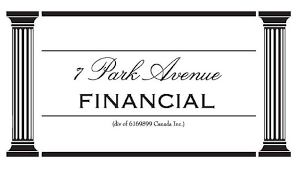|
How To Finance Inventory In Canada
Little Known Factors That Affect Inventory Finance Costs & Solutions
YOUR COMPANY IS LOOKING FOR HOW TO FINANCE INVENTORY FOR GROWTH!
You've arrived at the right address! Welcome to 7 Park Avenue Financial
UPDATED 07/06/2025
Financing & Cash flow are the biggest issues facing business today
ARE YOU UNAWARE OR DISSATISFIED WITH YOUR CURRENT BUSINESS FINANCING OPTIONS?
CONTACT US
CALL NOW - DIRECT LINE - 416 319 5769 - Let's talk or arrange a meeting to discuss your needs
EMAIL - sprokop@7parkavenuefinancial.com

Business Inventory Financing Costs: A Guide for Canadian Businesses
Introduction to Inventory Finance
Inventory financing is an essential financial tool that empowers Canadian businesses to maintain optimal inventory levels while supporting healthy cash flow.
By leveraging inventory finance, companies can purchase more inventory, cover necessary business expenses, and respond quickly to changes in customer demand.
This type of financing is especially valuable for small businesses, as it provides access to working capital without requiring them to tie up all their available funds.
Understanding how inventory financing works enables business owners to make strategic decisions about when and how to purchase inventory, ensuring they have the products needed to meet market demand while keeping their cash flow strong and their operations running smoothly.
Understanding Inventory Financing Solutions
Inventory finance lenders in Canada provide solutions to ongoing working capital challenges encountered by Canadian business owners and their financial managers.
Inventory financing lenders offer a range of tailored inventory financing options, with terms, interest rates, and fees that vary depending on the lender and the specific needs of the business.
Inventory is often a key component in the current asset portion of many balance sheets, particularly those in industries such as manufacturing.
There are some critical factors in an inventory financing loan that need to be understood. Understanding how inventory financing work is essential—there are two main forms: inventory loans and inventory lines of credit.
Each has its own benefits for business operations and credit scores, so choosing the right option is important for your business.
Let’s dig in! At the end, we’ll also highlight the key concepts of inventory financing, such as collateral, loan structure, and lender requirements.
What Is Inventory Financing?
Inventory financing is, of course, the collateralizing of your inventory for cash flow purposes.
Typically, your existing inventory or existing stock is used as collateral for these loans. Inventory acts, or inventory acting, as collateral directly impacts loan approval, interest rates, and the terms of the loan, as lenders assess the value and liquidity of your inventory.
It gets tricky because it has to work for both yourself and the lender, and it gets a little complicated if you have existing financing in place as part of your overall business strategy.
Most working capital solutions revolve around inventory and receivables. If your sales are growing and you have business accounts receivable and are turning your inventory, you are a candidate for more working capital—especially as these two asset categories grow!
Common forms of inventory financing include a short term loan or an inventory loan, both of which use your inventory as collateral to provide quick access to funds.
Inventory financing is a specific type of asset based financing, which is a broader category that includes loans secured by various business assets. By leveraging your inventory assets, your business can obtain financing to support operations or expansion.
Key Success Factors for Inventory Financing
The key to facilitating a solid inventory financing or purchase order financing arrangement in Canada is to help your lender get the feeling they will never have to realize on that inventory to collect their loan or financing proceeds!
You want to be able to demonstrate that your inventory is marketable and that you have the ability to control and count the inventory.
Providing up-to-date records of your current inventory and accurate financial statements is essential, as lenders use these documents to assess your business’s eligibility and financial health. Eligible borrowers are those who can provide proper documentation and meet the lender’s criteria.
A perpetual inventory accounting system helps a lot in that process, so investigate that with your accountant. In some cases, a purchase order financing solution or an A/R financing facility might complement the inventory financing loan. This is especially true for firms that take on much larger contracts or clients/orders.
Potential Challenges and Risk Management
When clients ask us what can go wrong in an inventory financing scenario, we often state that you must be in a position to be able to turn inventory over and demonstrate your products are marketable in a worst-case scenario.
A significant risk is holding unsold inventory, which can tie up capital and impact your financial stability if not managed properly.
Lenders may also assess the inventory's liquidation value, as this reflects the potential resale value if the inventory needs to be sold quickly. Additionally, appraisal fees may be charged by lenders to evaluate the value of inventory used as collateral.
We mentioned earlier about the challenge of managing through an inventory financing facility based on your current borrowing arrangements. In a perfect world (we know it’s not a perfect world!), you secure both inventory and A/R financing via a chartered bank.
Asset-Based Lending Alternative
The alternative to this is an asset-based lending facility, or what is known as an ABL line of credit.
This facility margins inventory and receivables to the maximum value, which greatly increases your ability to draw down on cash flow needs.
Inventory value is assessed based on current market prices and quality, and it directly impacts the amount you can borrow, as higher inventory value increases your borrowing capacity.
You will usually have a larger drawdown on receivables in a working capital or asset-based line of credit situation.
In these cases, a credit line is established based on the value of your inventory and receivables, allowing you to leverage these assets for ongoing financing.
Still, a proper inventory financing scenario can easily secure 60-80% of your overall inventory values, and that is a lot of additional cash flow if you need to draw down on it.
The credit limit set within the asset-based facility determines the maximum amount you can borrow, repay, and reuse, helping you manage seasonal cash flow and inventory needs efficiently.
Business Line of Credit as an Inventory Financing Tool
A business line of credit is a versatile inventory financing solution that offers businesses access to a revolving line of credit.
This means you can borrow funds, repay them, and borrow again as your needs change, making it an ideal option for managing inventory purchases and covering day-to-day business expenses.
With a business line of credit, you can purchase inventory as needed, pay suppliers promptly, and maintain a healthy cash flow throughout the year.
Interest rates on business lines of credit can vary based on your credit profile and the lender, but they often provide more flexibility than traditional term loans.
This flexibility allows you to respond quickly to new opportunities or unexpected expenses, ensuring your business operations remain uninterrupted and your inventory levels are always sufficient to meet customer demand.
Benefits of a Properly Structured Inventory Financing Loan for Cash Flow
A properly structured inventory financing facility’s key benefits are that it supplements your overall working capital needs.
Inventory financing can also help businesses seize growth opportunities by providing access to capital when needed. With this type of financing, businesses can acquire extra inventory during peak seasons or to take advantage of bulk purchasing discounts.
Proper inventory financing ensures products are always available to meet customer demand, which can help increase sales. The facility should revolve, and you should only be paying for what you use. You should also have defined borrowing limits on inventory and the ability to repay or draw more financing at your option.
Your best inventory financing ability will ultimately come from your ability, as we said, to demonstrate proper accounting and reporting of inventory, as well as information on customer prospects, contracts, etc.
Pricing and Qualification Factors
Pricing on inventory and purchase order financing varies with the facility’s size, the lender’s interpretation of the marketability of your product, and your ability to turn over inventory at equal to or better than industry standards based on your own business model.
The interest rate for inventory financing is determined by factors such as your creditworthiness, the value of your collateral, and lender criteria, and it directly impacts your overall loan cost.
Borrowers typically pay interest only on the amount utilized, so understanding how much you will pay in interest is crucial. The total loan cost includes not just the interest rate but also any additional fees, so be sure to review all terms carefully.
It’s important to compare interest rates among different lenders to find the most cost-effective solution. There are various loan options available, including term loans, lines of credit, and asset-based loans, each with different features.
A term loan provides a fixed repayment schedule, while a short term business loan is designed for immediate or temporary needs and may offer more flexibility. Both business loan and business loans can be used for inventory financing, depending on your business’s requirements.
Working capital loan and working capital loans are also viable options to support inventory purchases and maintain cash flow. Financing inventory purchases is a strategic way to manage cash flow and ensure you have the stock needed to meet demand. Loans can be used to purchase products, including raw materials and finished goods, helping you manage inventory efficiently.
When evaluating financing needs, consider your projected future sales to ensure you can meet repayment obligations. Short term business financing is ideal for covering urgent or one-time expenses.
A secured business loan requires collateral, such as inventory, while unsecured loans do not, though they may have higher interest rates; using personal assets as collateral is sometimes required for secured loans. Asset-based financing can also use a commercial building or office space as collateral to secure larger funding amounts.
During the application process, providing a bank account statement is essential to demonstrate your business’s financial health. If you need to secure financing quickly for inventory needs, look for lenders with streamlined approval processes.
Choosing the appropriate inventory financing solution is key to supporting your business’s unique needs and day to day operations. Alternatively, a factoring company can provide immediate cash flow by purchasing your receivables.
Financing can also be used for buying inventory to meet seasonal or unexpected demand. Inventory financing is particularly suitable for a small business looking to obtain financing by leveraging inventory value.
Working capital financing plays a crucial role in supporting inventory management and ensuring ongoing business stability.
Focus on demonstrating clearly how inventory financing will grow your sales and profits. That’s a win-win situation for you and your inventory lender.
Compare Lenders for Inventory Financing
When considering inventory financing, it’s important to compare lenders to find the best fit for your business’s unique needs.
Different lenders offer a range of interest rates, repayment terms, and financing options, so taking the time to evaluate your choices can lead to significant savings and better alignment with your working capital requirements.
In Canada, lenders such as Loans Canada, SharpShooter Funding, and Merchant Growth provide various inventory financing solutions tailored to different business sizes and industries.
By comparing lenders, you can secure the most favorable terms for your inventory purchases, ensuring you have the working capital needed to grow your business while keeping financing costs manageable.
Cash Flow Management and Inventory Finance
Effective cash flow management is crucial for businesses utilizing inventory financing. By carefully monitoring your cash flow, you can ensure that you have the funds available to repay inventory loans and cover ongoing business expenses.
Inventory financing works by providing the capital needed to purchase inventory and pay suppliers, but it’s important to consider all associated costs, including interest rates and origination fees, when evaluating your financing options.
By understanding how inventory financing works and managing your cash flow proactively, you can optimize your inventory management, avoid cash shortfalls, and position your business for long-term financial success.
This strategic approach allows you to take full advantage of inventory financing while keeping your business’s financial health at the forefront.
Short Case Study
Challenge: DistributionCo needed $500,000 to stock electronics for the holiday season but couldn't qualify for traditional bank financing due to rapid growth straining their debt-to-income ratio.
Solution: 7 Park Avenue Financial structured an inventory financing facility using their electronics inventory as collateral, providing $450,000 at 12% annual interest with flexible repayment terms.
Results: The company increased holiday sales by 180%, improved cash flow throughout the season, and established a relationship that continues to support their growth with reduced rates now at 9% annually.
Key Takeaways
- Interest Rate Structure: Understanding how rates are calculated gives you 80% of cost control—rates typically range from 8-25% annually based on risk factors
- Advance Rate Calculations: Knowing lenders typically advance 50-80% of eligible inventory value helps you plan capital needs accurately
- Inventory Turnover Impact: Fast-moving inventory (6+ turns annually) qualifies for better rates and terms than slow-moving stock
- Collateral Requirements: Eligible inventory must be finished goods, raw materials, or work-in-progress that can be easily liquidated
- Repayment Flexibility: Unlike fixed monthly payments, inventory financing often ties repayment to sales cycles and cash flow patterns
- Risk Assessment Factors: Lenders evaluate business credit, inventory marketability, and cash flow history as primary approval criteria
- Documentation Requirements: Basic financial statements, inventory reports, and business bank statements are typically sufficient for approval
- Speed Advantages: Most inventory financing approves within 24-48 hours compared to weeks or months for traditional loans
Conclusion
Call 7 Park Avenue Financial, a trusted, credible, and experienced Canadian business financing advisor with a track record of financing success who can assist you with your inventory finance needs.
FAQ
What factors determine my business inventory financing costs? Business inventory financing costs depend on your credit score, inventory turnover rate, industry risk, loan amount, and collateral quality. Lenders also consider your business's cash flow history and the marketability of your inventory.
How do inventory financing costs compare to traditional business loans? Inventory financing costs typically range from 8-25% annually, often higher than traditional loans but more accessible. The trade-off is speed and flexibility—you can access funds quickly without extensive documentation requirements.
Citations
- Canada Business Development Bank. (2023). "Small Business Financing in Canada: Annual Report." https://www.bdc.ca
- Statistics Canada. (2023). "Business Financing Survey Results." https://www.statcan.gc.ca
- Canadian Federation of Independent Business. (2023). "Cash Flow and Financing Challenges." https://www.cfib-fcei.ca
- Bank of Canada. (2023). "Business Credit Conditions Survey." https://www.bankofcanada.ca
- Industry Canada. (2023). "SME Financing Data Initiative." https://www.ic.gc.ca
- 7 Park Avenue Financial (2025) "Canadian Business Guide to Inventory Financing Success." https://medium.com/@stanprokop/canadian-business-guide-to-inventory-financing-success-73c99244a15e

' Canadian Business Financing With The Intelligent Use Of Experience '
STAN PROKOP
7 Park Avenue Financial/Copyright/2025

ABOUT THE AUTHOR: Stan Prokop is the founder of 7 Park Avenue Financial and a recognized expert on Canadian Business Financing. Since 2004 Stan has helped hundreds of small, medium and large organizations achieve the financing they need to survive and grow. He has decades of credit and lending experience working for firms such as Hewlett Packard / Cable & Wireless / Ashland Oil
|